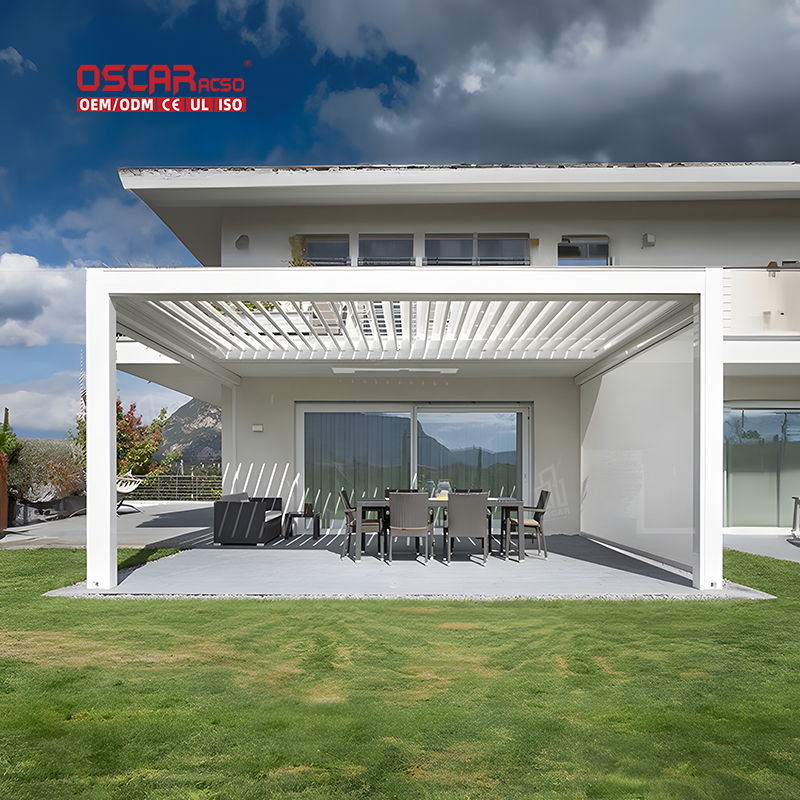Pergola Flooring Explained, Foundation for Outdoor Beauty and Function
What exactly is pergola flooring? 🤔 It\'s the ground surface or foundation beneath your pergola, carefully chosen to ...

What exactly is pergola flooring? 🤔 It’s the ground surface or foundation beneath your pergola, carefully chosen to provide stability, enhance aesthetics, and elevate the functionality of your outdoor living space. From classic wood to modern composite materials, the right flooring transforms a simple structure into a cozy, inviting retreat.
.jpg)
🌟 Why Flooring Matters Under a Pergola
Your pergola’s floor isn’t just a base—it’s the stage for your outdoor life. It balances:
- •
Visual appeal: Complements your pergola’s style and your garden’s vibe.
- •
Durability: Handles weather, foot traffic, and outdoor furniture.
- •
Comfort: Provides a safe, pleasant surface for walking and lounging.
- •
Drainage: Allows water to flow away, preventing puddles and slips.
🏆 Top Pergola Flooring Materials
Choose from these popular options, each with unique perks:
- 1.
Wood Decking 🌳
- •
Types: Cedar, redwood, pressure-treated pine.
- •
Pros: Natural warmth, timeless look, blends with gardens.
- •
Cons: Requires sealing/staining to resist rot and insects.
- •
Cost: 2–7 per sq. ft.
- •
- 2.
Composite Decking ♻️
- •
Pros: Low maintenance, eco-friendly (recycled materials), resists fading and moisture.

- •
Cons: Can get hot in direct sun.
- •
Cost: 1–4 per sq. ft.
- •
- 3.
Concrete with Patterns 🌀
.jpg)
- •
Pros: Endless customization with stains and geometric stamps, highly durable.
- •
Cons: May crack in freeze-thaw cycles; can be slippery if untextured.
- •
Cost: 1.5–10 per sq. ft.
- •
- 4.
Natural Stone or Pavers 🪨
- •
Types: Slate, travertine, flagstone.
- •
Pros: Elegant, weather-resistant, excellent drainage.

- •
Cons: Heavy, needs professional installation.
- •
Cost: 5–20 per sq. ft.
- •
- 5.
Interlocking Deck Tiles 🧩
- •
Pros: DIY-friendly, modular, covers old concrete or uneven surfaces.
- •
Cons: Less permanent; may shift over time.
- •
Cost: 3–8 per sq. ft.
- •
- 6.
Gravel ⛰️
- •
Pros: Affordable, drains well, rustic charm.
- •
Cons: Uneven for walking; may need occasional replenishing.
- •
Cost: 1–3 per sq. ft.
- •
- 7.
Artificial Grass 🌿
- •
Pros: Always green, soft underfoot, no mowing/watering.
- •
Cons: Can heat up in direct sun.
- •
Cost: 5–15 per sq. ft.
- •
💡 Key Selection Factors
Ask yourself these questions before choosing:
- •
Climate: Humid or rainy? Pick water-resistant materials (e.g., composite, concrete).
- •
Budget: Gravel and concrete are cost-effective; stone and terrazzo are premium.
- •
Maintenance: Wood needs yearly care; composite and stone are low-effort.
- •
Style: Match your home’s architecture—e.g., brick for traditional, polished concrete for modern.
- •
Safety: Prioritize slip-resistant surfaces (textured stone, composite) for wet areas.
🛠️ Installation Tips & Tricks
- •
DIY vs. Pro: Tiles and gravel are DIY-friendly; stone and concrete often need pros.
- •
Base Preparation: Ensure a level, stable base to prevent shifting or water pooling.
- •
Drainage: Slope floors slightly away from your home to direct water runoff.
- •
Permits: Check local rules for permanent installations like concrete pads.
💎 Final Insights
Pergola flooring is the unsung hero of outdoor design—it merges practicality with beauty to create a seamless extension of your home. Whether you crave the rustic feel of wood or the modern ease of composite, your choice sets the tone for countless memories under the sun or stars. Remember: The best floors don’t just look good—they make your pergola a living space💖.

